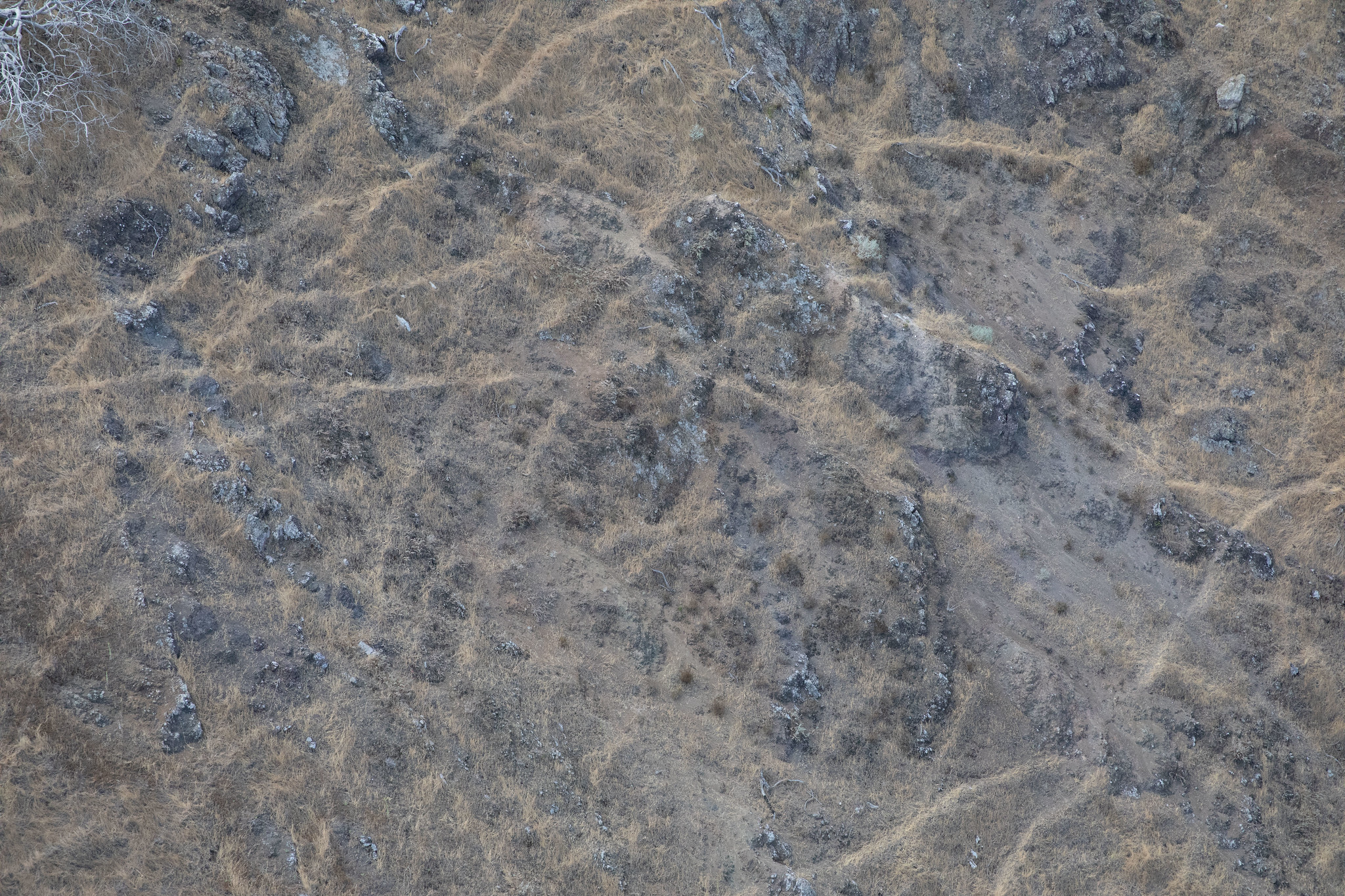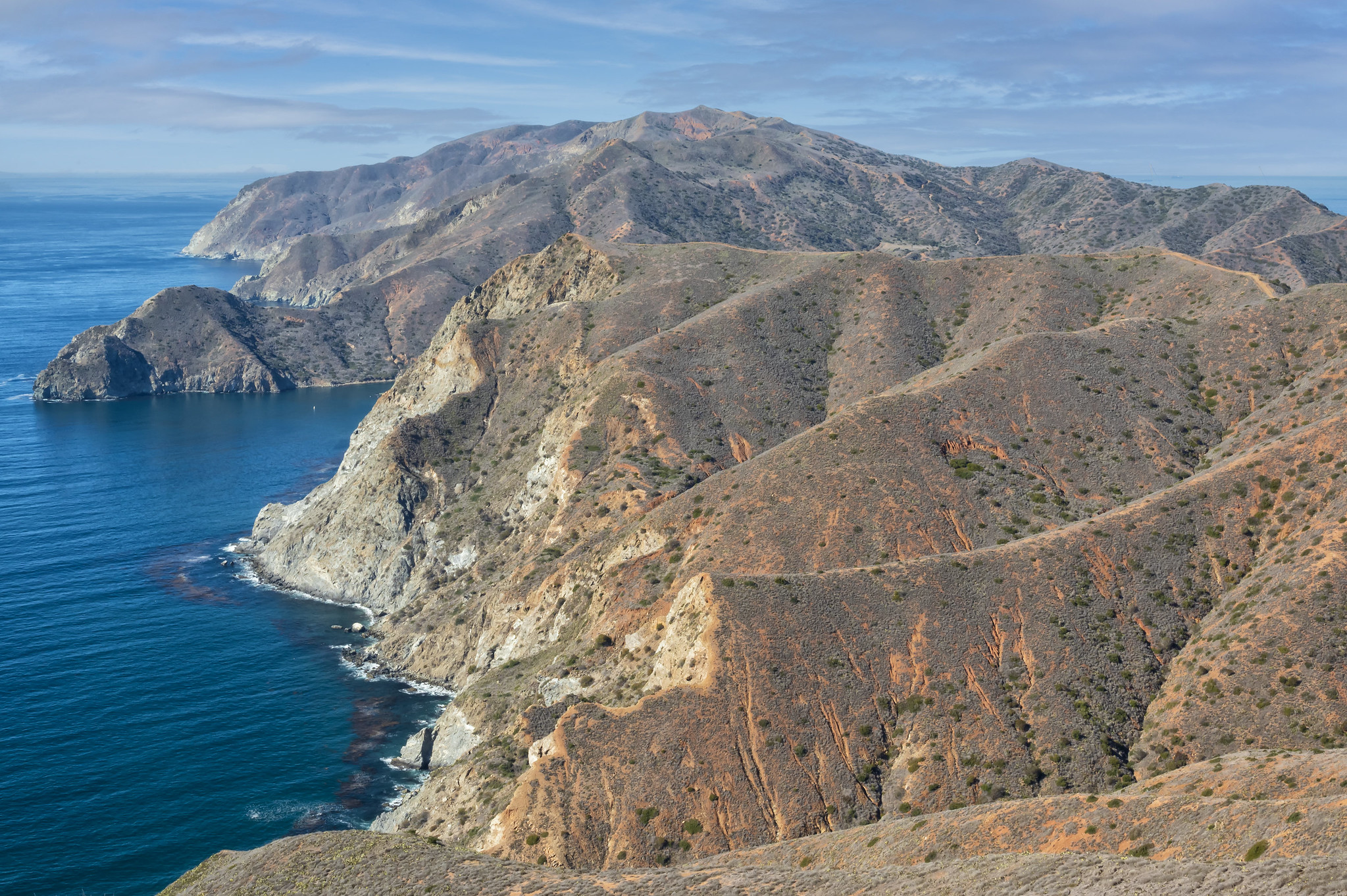Catalina Island Restoration Project
Science, Data, and Methodologies
THE PLAN TO INCREASE THE RESILIENCY OF CATALINA ISLAND
IS BACKED BY SCIENCE.

Invasive Species Eradications on the California Islands
Islands are “at risk” biodiversity hotspots, supporting approximately 20% of Earth’s biodiversity and 50% of threatened species all on only 6.7% of the globe’s land surface area.
- Fernández-Palacios, J. M. et al. Scientists’ warning – The outstanding biodiversity of islands is in peril. Ecol. Conserv. 31, e01847 (2021)
The arrival of introduced invasive species to islands is a major threat to these biodiversity hotspots with invasive species a primary driver of recent extinctions.
Bellard, C., Cassey, P. & Blackburn, T. M. Alien species as a driver of recent extinctions. Biol. Lett. 12, 20150623 (2016)
Scientific SourceThe control and eradication of invasive mammals has been shown to greatly benefit biodiversity conservation across island ecosystems.
- Jones, H. P. et al. Invasive mammal eradication on islands results in substantial conservation gains. Proc. Natl. Acad. Sci. 113, 4033–4038 (2016)
There have been over 40 eradications from 20 California islands (including both the California Channel Islands and Baja California Islands), ranging from live removal of a few animals to large-scale lethal eradication efforts. The California islands are excellent examples of the practicality and efficacy of invasive species eradication to benefit ecosystems.
- Knowlton, J. L. et al. Eradication of Non-Native Mammals and the Status of Insular Mammals on the California Channel Islands, USA, and Pacific Baja California Peninsula Islands, Mexico. Southwest. Nat. 52, 528–540 (2007)
Across the archipelago, efforts to remove introduced mammals are a long-standing objective supported by federal, state, and non-governmental organizations,
The California Department of Fish and Wildlife’s 2015 State Wildlife Action Plan Appendix H covering Offshore Islands specifically identifies an objective of “remove or reduced introduced mainland vertebrates and/or feral livestock that impact native species, specifically endemic species, and ecosystem function.”
Santa Catalina Island has experienced a variety of mammalian introductions including mule deer, pig, goat, sheep (Ovis aries), cattle (Bos taurus), and bison (Bison bison). Cattle were removed in mid-20th century and goats and pigs were fully eradicated by the early 2000s.
Santa Rosa Island within Channel Islands National Park also had an introduced population of mule deer, along with introduced elk (Cervus canadensis). This is in addition to introduced populations of pigs and cattle. Following the eradication of pigs in early 1990s and the removal of cattle in 1998, deer and elk were removed in 2012. The control of introduced herbivores has allowed for an initial passive recovery of native island flora, demonstrating the potential for recovery of biodiversity following the removal of exotic herbivores.
- Summers, R., Masukawa, J. & Hartman, B. D. The Influence of Slope on Vegetation Recovery Following Nonnative Grazer Removal on Santa Rosa Island, California. West. North Am. Nat. 78, 787 (2018)
- Thomson, D. M. et al. Diverse native island flora shows rapid initial passive recovery after exotic herbivore removal on Santa Rosa Island, California. Biol. Invasions 24, 1635–1649 (2022)
Invasive mammal eradication on other California Channel Islands have run a range of species and scales.
- San Clemente Island had cattle, sheep, goats, pigs, and deer introduced in the late 1800s to mid-1900s, with goats eradicated in 1991 and pigs and deer in the 1990s. The eradication of these introduced species facilitated the recovery of endemic island flora and fauna, with five species (four plants and a bird) removed from the endangered species list in 2023.
- Santa Cruz Island had populations of cattle, sheep, and pigs. Cattle and sheep were removed following the cessation of ranching operations in the 1980s and 1990s, while pigs were lethally eradicated in the 2000 by the National Park Service and The Nature Conservancy.
- The remaining California Channel Islands of San Miguel Island, San Nicolas Island, Anacapa Island, and Santa Barbara Island all underwent the introduction of invasive mammals with the majority of removed or eradicated:
- San Miguel Island had sheep and donkeys removed in the 1960s and 1970s respectively.
- San Nicolas Island had sheep and cats removed in the 1940s and 2000s respectively.
- Anacapa Island had sheep, cats, rabbits (Lepus europaeus), and black rats introduced, with the larger mammals removed in the late 1960s and rats lethally removed in the 2000s.
- Santa Barbara Island had sheep and rabbits introduced in the early 1900s with sheep removed in 1926 and rabbits eradicated in the early 1980s.
- Beyond rats remaining on San Miguel, San Clemente, and Santa Catalina islands, deer and bison on Catalina Island are the only remaining introduced mammals on the California Channel Islands.
- Knowlton, J. L. et al. Eradication of Non-Native Mammals and the Status of Insular Mammals on the California Channel Islands, USA, and Pacific Baja California Peninsula Islands, Mexico. Southwest. Nat. 52, 528–540 (2007)
Eradications have taken place across the Baja California Islands, with the non-profit organization Grupo de Ecología y Conservación de Islas (GECI) a central driver of efforts, with the eradication of goats from Guadalupe Island (the largest California island) in 2007 facilitating vegetative recovery.
- Garcillán, P. P., Ezcurra, E. & Vega, E. Guadalupe Island: Lost paradise recovered? Overgrazing impact on extinction in a remote oceanic island as estimated through accumulation functions. Biodivers. Conserv. 17, 1613–1625 (2008)
- Jones, H.P., Homes, N.D., Butchart, S., Croll, D. Invasive mammal eradication on islands results in substantial conservation gains. Applied Biological Sciences 113 (15) 4033-4038 (2016).

Deer Impact on Vegetation
The mule deer have been shown to both reduce the resilience of native shrub communities after fire and to prefer endemic island chaparral species that have less defense to herbivory compared to mainland counterparts. Beyond benefits specifically to biodiversity, mule deer eradication makes possible larger scale landscape level restoration with ecosystem services benefits (decreased soil erosion, increased water retention, a more fire resilient landscape).
- Ramirez, A. R., Pratt, R. B., Jacobsen, A. L. & Davis, S. D. Exotic Deer Diminish Post-fire Resilience of Native Shrub Communities on Santa Catalina Island, southern California. Plant Ecol. 213, 1037–1047 (2012)
- Salladay, R. A. & Ramirez, A. R. Reduced Defenses and Increased Herbivore Preference of Island Chaparral Shrubs Compared to Mainland Relatives. West. North Am. Nat. 78, 768 (2018)
Introduced Southern California mule deer negatively affect the federally-threatened Crocanthemum greenei (island rush-rose) on Catalina Island, including through reduced stem measurement and seed production failure, harming overall biodiversity. Studies at the species level may detect effects specific effects not noticed with broad vegetation monitoring.
- Dvorak, T. M., & Catalano, A. E. (2016). Exclusion of Introduced Deer Increases Size and Seed Production Success in an Island‐Endemic Plant Species. Ecology and Evolution, 6(2), 544–551.
Deer are the major “transformer” species on Catalina Island, stressing native plant species.
- Knapp, D. A. (2014). Ecosystem Restoration on Santa Catalina Island: A Review of Potential Approaches and the Promise of Bottom-Up Invader Management. Monographs of the Western North American Naturalist, 7(1), 421–434.
Martin et al. surveyed bird assemblages and vegetation structure of 18 islands in the Gulf and San Juan Islands of the Georgia Basin with varying deer densities. Islands with low deer densities (0 deer/ha) supported more understory (0.5-1.5m) and mid-story (0.5-4m) vegetation cover and had the most diverse and abundant bird fauna.
They found a significant negative correlation between deer density and bird populations dependent on understory vegetation. Islands with a low deer density had species abundance that was twice as high than on islands with either moderate (0.13-0.38 deer/ha) or high (1.05-1.14 deer/ha) deer densities.
- Martin, T.G., Arcese, P. and Scheerder, N., 2011. Browsing down our natural heritage: Deer impacts on vegetation structure and songbird populations across an island archipelago. Biological Conservation, 144(1), pp.459-469.
Martin et al. investigated the effects of unrestrained ungulates on forest ecology across seven islands of the Haida Gwaii archipelago. They compared the plant and animal communities on islands without deer, on islands where deer had been present for about 20 years, and on islands where deer had been present for over 50 years. Species diversity was highest in the communities where deer were absent.
Deer browsing was found to have caused a dramatic simplification of shoreline and interior plant communities over time with the main impact being on biodiversity of the understory, its vegetation and dependent bird and insect species. Species density of invertebrate species decreased with the length of deer presence. Although they observed an initial peak in species richness of understory birds on islands with a deer presence of 20 years, they saw a great reduction in songbird species richness and diversity on islands with a prolonged deer presence of over 50 years. Overall, Martin et al. found a significant negative effect on deer presence and the abundance of understory songbirds.
- Martin, J.L., Stockton, S.A., Allombert, S. and Gaston, A.J., 2010. Top-down and bottom-up consequences of unchecked ungulate browsing on plant and animal diversity in temperate forests: lessons from a deer introduction. Biological Invasions, 12, pp.353-371.
Habitat destruction by introduced herbivores, including mule deer, has been recognized as a principal threat to the Channel Islands’ endemic bird species, such as the Catalina Hutton’s Vireo. Management recommendations for both the Catalina Hutton’s Vireo and Catalina California Quail have identified completing the removal of nonnative animals from Catalina as a priority.
- Shuford, W.D. and Gardali, T., 2008. California bird species of special concern. Studies of Western Birds.
The extirpation of the island scrub-jay from Santa Rosa Island is believed to have been in part caused by habitat loss caused by nonnative ungulates.
- Morrison, S.A., Sillett, T.S., Ghalambor, C.K., Fitzpatrick, J.W., Graber, D.M., Bakker, V.J., Bowman, R., Collins, C.T., Collins, P.W., Delaney, K.S. and Doak, D.F., 2011. Proactive conservation management of an island-endemic bird species in the face of global change. BioScience, 61(12), pp.1013-1021.
This study found that islands with longer browsing histories had lower species density and abundance of browse-layer invertebrates. Insect abundance decreased eightfold and species density decreased sixfold on islands browsed for more than 50 years compared with islands without deer.
This trend mainly impacted primary consumers, most likely because the herbaceous vegetation and flowers they depend on are directly depleted by deer.
- Allombert, S., Stockton, S. and Martin, J.L., 2005. A natural experiment on the impact of overabundant deer on forest invertebrates. Conservation Biology, 19(6), pp.1917-1929.

Deer Removal Methodologies
Capture myopathy is a condition observed in mammals in which muscle tissues are damaged due to stress, struggle, or exertion, typically during capture or restraint. A study completed by Beringer et al. evaluated the translocation of 80 deer captured and moved during a four-month period. The translocated deer had a lower survival rate compared to that of resident deer.
The study found that capture myopathy was a significant cause of death for relocated deer. Within a year of the translocation, 55 total deer died with capture myopathy being a leading cause accounting for 29% of the deaths.
- Beringer, J., Hansen, L. P., Wilding, W., Fischer, J., & Sheriff, S. L. (1996). Factors Affecting Capture Myopathy in White-Tailed Deer. The Journal of Wildlife Management, 60(2), 373–380.
Transporting deer to new environments leads to poor quality of life and survival rates. A report examining the relocation of around 200 deer live trapped and transported off of California’s Angel Island showed that only 15% of monitored, radio-collared deer survived a full year.
The majority of the mortalities were attributed to the deer failing to recognize and adapt to new threats that were not present in their original habitat, such as predation and human threats. A large portion of the mortalities were attributed to vehicle collisions. The first two months after release saw the highest rate of mortalities.
- Smedley DC, McMillan BR, Hersey KR, Shannon JM and Larsen RT (2023) Outcomes associated with translocation of mule deer (Odocoileus hemionus): Influence of age,release timing, and year on survival. Front. Ecol. Evol. 11:1087058.
- O’Bryan, M. K., & McCullough, D. R. (1985). Survival of Black-Tailed Deer Following Relocation in California. The Journal of Wildlife Management, 49(1), 115–119.
A study found that stress levels of deer who underwent remote immobilization were significantly lower than those who were captured with drop-nets.
Measuring serum cortisol concentrations, the study found that on average cortisol levels were 3.5-5.0 times higher in deer captured using physical restraint techniques than those remotely immobilized. They also compared cortisol concentration values to those of deer that were killed instantly via gunshot to the head. Cortisol concentration was highest in deer captured with drop-nets, intermediate for remotely immobilized deer, and lowest for head-shot deer.
- DeNicola, A. J., & Swihart, R. K. (1997). Capture-Induced Stress in White-Tailed Deer. Wildlife Society Bulletin (1973-2006), 25(2), 500–503.

The Fire Effect
Deer pose an acute threat to post-fire regeneration of native chaparral communities on Santa Catalina Island. After the 2007 Island Fire, Toyon (Heteromeles arbutifolia) resprouts had a mortality rate of 88% compared to 11% inside the exclosures. Additionally, other shrubs such as Rhus integrifolia and Rhamnus pirifolia showed greatly reduced canopies (>93%), which ultimately changes the structure of the Island Chapparal.
- Ramirez, A. R., Pratt, R. B., Jacobsen, A. L., & Davis, S. D. (2012). Exotic Deer Diminish Post-fire Resilience of Native Shrub Communities on Santa Catalina Island, southern California. Plant Ecology, 213(6), 1037–1047.
In California, much of the chapparal ecosystem, which used to be resistant to invasion, has been converting to invasive grasslands. This is due to accelerating fire cycles, fragmentation, and invasive seed sources. Once invasive grasslands are established, they result in increasing fire frequency which results in regeneration of groundcover, increase ignition, and extending the life of the fire season. Invasive annual grasslands also reduce soil moisture at depths of less a 0.6m, leading to more xeric conditions.
- Park, I.W., Jenerette, G.D. Causes and feedbacks to widespread grass invasion into chaparral shrub dominated landscapes. Landscape Ecol 34, 459–471 (2019).
The strongest impact of invasive plants on fire regimes occurs in ecosystems such as coastal sage scrub. In shrublands, most native plants do not easily ignite except under high heat conditions. Invasive annual grasslands alter these systems though, since they dry out more quickly, they become much more easily ignitable. The most likely source of ignition is from human activity. Overall, invasive annual grasses have enhanced the high surface area to volume ratio of ignitable fuels. Moreover, less of a time interval between fires (12 years) intervals leads to fewer shrubs in these systems.
- Lambert, Adam & Dudley, Tom & D’Antonio, Carla. (2010). Invasive species and fire in California. Fremontia. 38. 29-36.
Post-fire focus Arctostaphylos catalinae, Ceanothus arboreus, and Ceanothus megacarpus var. megacarpus.12-20 plots exposed to browsing with 12-20 control plots within deer exclosures. The study showed significant negative impacts to seedling height from browsing and therefore likely impacts to stand structure.
- Jacobsen, A. L., Pratt, R. B., Alleman, D., & Davis, S. D. (2018). Post-Fire Ecophysiology of Endemic Chaparral Shrub Seedlings From Santa Catalina Island, Southern California. Madroño, 65(3), 106–116.
